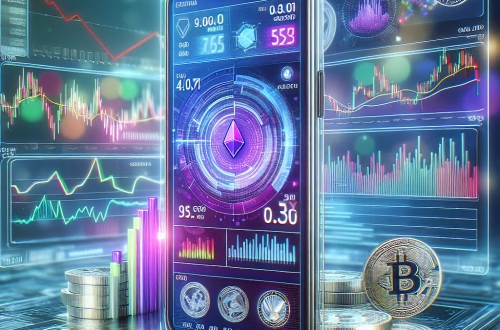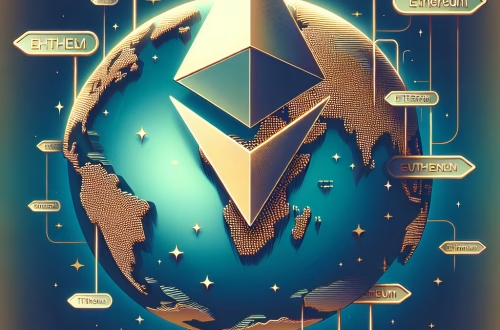how to verify crypto transactions
Summary:
Verifying crypto transactions ensures funds reach their intended destination securely and transparently. This article explains how blockchain explorers, wallet notifications, and transaction IDs (TXIDs) enable users to track payments across networks like Bitcoin, Ethereum, and meme coins. Newcomers learn why verification prevents scams, reduces errors, and builds trust in decentralized systems. We cover step-by-step methods, common pitfalls, and tools tailored for novices navigating crypto’s irreversible nature.
What This Means for You:
- Security through Transparency: Verifying transactions protects you from fraud or accidental losses. By checking a TXID on a blockchain explorer, you confirm whether funds moved before releasing goods or services.
- Error Prevention with Simple Tools: Use free tools like Etherscan or Blockchain.com to validate transactions. Always copy-paste wallet addresses (never type manually) and cross-verify the first/last 5 characters to avoid typos.
- Transparency as a Learning Tool: Observing transaction details (fees, confirmation times, network status) helps you understand market trends. For NFTs, use platforms like OpenSea’s activity logs to verify ownership transfers.
- Future Outlook or Warning: Regulatory scrutiny may standardize verification processes, but scams will evolve. Always verify transactions independently—don’t trust “confirmation” screenshots from strangers. Layer-2 networks (e.g., Polygon) complicate verification, requiring platform-specific explorers.
Explained: how to verify crypto transactions
Why Verification Matters
Crypto transactions are irreversible. Once sent, funds cannot be reclaimed without the recipient’s consent. Verification ensures accountability, detects network congestion, and mitigates risks like “pending purgatory” for meme coins or NFTs. Unlike traditional banking, crypto lacks chargebacks, making pre-verification critical.
Core Tools for Verification
Blockchain Explorers
Blockchain explorers (e.g., Blockchain.com for Bitcoin, Etherscan.io for Ethereum) are search engines for public ledgers. Users input a transaction ID (TXID) or wallet address to view real-time statuses. Key data includes:
- Confirmations: The number of blocks added after your transaction. Bitcoin needs 1-6 confirmations for security; Ethereum requires ~12-30.
- Gas Fees: On Ethereum, low fees may cause delays. Explorers show if fees were sufficient.
- Mempool Status:
Pending transactions reside in the mempool. Explorers reveal if your transaction is stuck due to low fees.
Wallet Notifications
Wallets (e.g., MetaMask, Trust Wallet) notify users upon transaction completion. However, these rely on external data sources. Cross-check with explorers for absolute certainty—especially with meme coins, where fake tokens mimic legitimate transfers.
Step-by-Step Verification Process
- Obtain the TXID: After sending crypto, your wallet generates a TXID—a unique string of letters/numbers.
- Use the Correct Explorer: Bitcoin TXIDs go to Bitcoin explorers; Ethereum TXIDs to Etherscan. BSC transactions use BscScan.
- Analyze the Details:
Edge Cases & Pitfalls
Meme Coins & NFTs: These often operate on Ethereum or BSC. Verify contract addresses (e.g., DOGE’s native chain vs. wrapped tokens) to avoid scams. For NFTs, confirm the asset’s metadata on OpenSea or Rarible matches the transaction.
Privacy Coins: Monero or Zcash transactions are obscured, limiting verification options. Rely on wallet balance updates.
Limitations and Challenges
- Finality Delays: Ethereum transitions to proof-of-stake reduced confirmation times, but Solana or Avalanche may finalize faster than explorers update.
- Explorer Accuracy: Free explorers occasionally lag during congestion. Premium APIs (e.g., Chainalysis) offer real-time data but cost money.
- User Error: Novices may misinterpret “confirmed” as “received,” but recipients must still accept tokens—especially with conditional smart contracts.
Best Practices for Novices
- Bookmark Explorers: Save links to avoid phishing sites.
- Enable Wallet Alerts
- Test Small First: Send微量 crypto before large sums.
People Also Ask About:
- “How do I check if my Bitcoin transaction went through?”
Use a Bitcoin blockchain explorer like Blockchain.com. Paste your TXID or wallet address into the search bar. If the transaction shows at least 1 confirmation, it’s processed. For exchanges like Coinbase, wait for their internal confirmations (typically 3-6). - “Can a crypto transaction fail after being sent?”
Yes. Transactions fail if gas fees are too low (Ethereum), if meme coin trades exceed slippage tolerances, or if networks congest. Use explorers to check for “failed” statuses. Funds may return minus fees. - “Why does verification take so long?”
Proof-of-work coins like Bitcoin require miners to validate blocks—slower during high traffic. Layer-2 solutions (Lightning Network) or coins like Solana (proof-of-history) accelerate this. - “Are unverified transactions reversible?”
No. Even pending transactions are immutable. However, if miners exclude a low-fee transaction, it may drop from the mempool after days, effectively canceling it.
Expert Opinion:
The self-custody ethos of crypto necessitates rigorous verification habits. Experts recommend treating TXIDs like legal receipts—always save them for disputes. As zero-knowledge proofs and layer-2 networks expand, transaction obfuscation may complicate verification. Novices should prioritize wallets supporting on-device TXID generation to avoid phishing. Remember: no legitimate entity will ask for your private key to “verify” transactions.
Extra Information:
- Blockchain.com Explorer: Tracks Bitcoin, Ethereum, and Bitcoin Cash transactions. Ideal for verifying large BTC transfers.
- Etherscan: The definitive tool for Ethereum, BSC, and Polygon transactions. Validates ERC-20 tokens and NFTs.
- Binance Academy Guide: A beginner-friendly tutorial correlating exchange withdrawals with on-chain verification.
Related Key Terms:
- how to check Bitcoin transaction status on blockchain
- verify Ethereum transaction confirmation time
- best crypto transaction tracker for Solana
- step-by-step guide to verifying NFT purchases
- fix pending crypto transaction with low gas fee
- how to find transaction ID in MetaMask wallet
- tools to verify meme coin transfers in the USA
#verify #crypto #transactions


